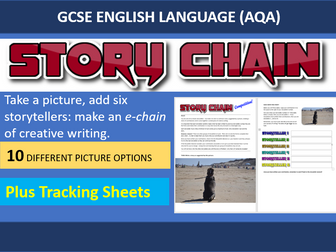
Circle of Friends
The National Autistic Society Autism Helpline often receives calls from parents and carers asking about ways of promoting inclusion and interaction with peers, for their child with an autism spectrum disorder (ASD).
This information sheet provides a brief overview of a strategy called the Circle of Friends approach, which is used mainly in mainstream schools.

Circle of Friends Process
This article describes the background to and the actual setting up and running of ' circles of friends' . We outline this approach to the inclusion of children with severe emotional and behavioural difficulties

Teachers TV: Circle of Friends - Ben
Successful inclusion strategies aim to promote the social and emotional wellbeing of SEN pupils. Such children are more likely to be bullied than their non-disabled peers and schools now have a duty of care, enshrined in law. Isolation and low self-esteem create barriers to learning and these programmes aim to show how these inclusive solutions can benefit the whole class. Some schools use peer support systems and train their buddies according to their function; to help manage conflict, to play with or befriend pupils at break times, to help a pupil to access an activity they could not access without help, and also to help manage bullying within school. This programme examines the planning and implementation of one system and follows the buddies as they offer peer support. These methods have been shown to increase self-esteem, reduce bullying and raise levels of attainment in both SEN children and their peers.

Unit of work for TA/SENCo - Building friendship, Social Skills, Circle of Friends, Emotional literac
This unit of work is several weeks for your TA to deliver for a small group of pupils. I have written it for children who need to develop friendships and friendship skills. I hope you find it useful. A TA can pick this up with no explanation or support and should be able to deliver with just an hour or so to familiarise herself, print resources etc. I have also made a game in case your school doesn't have friendship type games. Enjoy your weekend. I hope it saved you some time and energy and that your children learn some friendship and social skills.
Thank you for buying from me. I would appreciate a friendly review as I have kept the cost down, please bear in mind the amount of work when you leave my review.
All pictures are from Dreamstime Phil17, copyrightfreephotos.com where no naming is required but came from sunmaster or from clipart and are all copyright free.

R.E- Year 1- Belonging Unit (6 lessons)
About this unit
This unit looks at what it means to belong to
something, whether it be a community, class, club,
country, team, family, circle of friends and so on,
and the need to show that belonging through joint
activities or lifestyle, dress or behaviour.
The unit explores belonging to:
• a family
• a school
• other groups
• the local community
• our country
• the world.
People of particular life stances or groups will
be valuable in sharing their experiences and
showing any clothing and artefacts that signal their
belonging and pride in that. Where opportunities
arise for adding this feature to the lessons, make
the most of them!
Lesson length: Each lesson is designed to take one
hour. (Lesson 3 will take longer if the group works
outside to gather photographs.)
Expectations
At the end of this unit most children will:
• understand the importance people attach to
belonging to a group, and be able to name a
religious and secular group.
Some children will have made less progress and will:
• be able to talk about the groups they belong to.
Some children will have progressed further and will:
• be able to explain why people belong to religious
groups, naming some
undefined
Sale

SEAL PSHE Year 5 and 6 Planning Well Being Week Multi Faith Anti Bullying
Did a lot of work in my career with year 5 and 6 in the aspect of PSHE SEAL etc.
Gathered together my planning.
Some good powerpoints in here.
There’s planning for a Multi Faith week that covers the whole school.
Well being week covers the whole school too.
Topics tackeld include :
healthy eating
feelings
new beginnings
getting on and falling out
going for goals
relationships
problem solving
going for goals
sample planning
Objectives
• I know that my relationships are all different and that different ways of
behaving are appropriate to different types of relationships.
• I can accept and appreciate people’s friendship and try not to demand
more than they are able or wish to give.
Activities
Ask the children to think of as many different friends as they can (in and out of
school), then to think about the following questions for a few moments, then to
share their thoughts in pairs for 2 minutes.
Do you like all your friends in the same way?
• Do you like doing the same thing with all of your friends?
• Do you tend to see some friends only in certain situations?
• Would you want to see all of your friends all the time?
Take feedback, and hold these ideas. Teacher to demonstrate Levels of Friendship circles on the board, starting in the centre with close friends and family, second circle –good friends/cousins etc, third circle, third circle –people in school/relatives you see rarely, fourth circle –people who are acquaintances or know slightly –postman, doctor etc.
Give out copies of the Levels of friendship resource sheet and ask children to
complete the sheet for themselves. They will not need to share it with anyone.
Plenary
When the children have finished, or the allocated time has elapsed, facilitate a brief discussion as a class, drawing out the point that we all tend to have friendships at different levels, and this is OK. We do not want to be best friends with all of our friends. Some of us have many friends, some prefer to have one close friend.
Outcomes
Children will recognise the different relationships that they have with people that they know, and recognise that these differing relationships are fine to have.

Home Learning Resource – Collaborative Story Chain for GCSE English Language
This is something which will keep a class busy - or even a circle of friends if you are a parent looking for a resource to use with your child and their friends.
It enables learners to work on a single task together with each building on the work done by the previous. There aren’t many resources around which enable a class to work in this way. The ones I have done it with have enjoyed it immensely.
It’s not a new concept but perhaps presented in a slightly more modern way – it’s certainly designed for the times in which we currently live.
Each “Story Chain” task consists of a picture and the task – “Write a story as suggested by this picture”.
You email the file to “Student A” who completes the first part of the story – they are called Storyteller 1. They return it to you to check and forward to Storyteller 2. The process is repeated until you get to Storyteller 6, who is the only one allowed to end the story!
Students do not know who the other storytellers are in their group – to avoid classroom bias! However, there is an element of competition. There are probably more than six learners in your class, so you will split your students into groups. The first group to finish, following the rules, is the winner. You may have to ask one or more students to do help out if your class number is not divisible by six.
You can then reveal the name of the storytellers to their groups. So as well as there being an element of competition, I also hope that there is fun involved too.
The process can be done in a number of ways. You could send each group of storytellers a different picture stimulus – there are ten. Alternatively, you could email them the same one, to see how many different stories can evolve from a single piece of stimulus. In that way, you have nine more story chains to create.
There is quite a lot of emailing involved on your part – and so I have created two tracking sheets as well so you can list who is in each group and how long each took to get to the point where storyteller 6 finishes and emails you the complete story.
There is also an exemplar in this bundle of files which can be used to give yourself an idea of what a finished piece might look like or indeed to send out to your students as an example (although this would mean you were down to 9 pictures).

Changing Friendships
Looking at the issues caused when friendship groups change - powerpoint with resource/videoclips and quiz handout

Olympic Mascots
This power point shows the mascots over the last few years, their names and some reasons for their design.

Bullying - PHSE
Learning Objective:
To explore and understand the issues and effects of bullying in schools.
To recognise moral dilemma and peer pressure.
To understand what is meant by the term Peer Pressure
To think of strategies of how to avoid Peer Pressure.
To recognise and tackle cyber bullying.
This is one of the best resources on this website! A must buy! Great power points, classroom discussion points, the students will definitely benefit from this! Purchase this resource now! Biggest bargain on this website - only £2! Due to high demand, this resource could be charged at £15 in the future, so buy now!

Eulogy for the Titanic
I taught this lesson as part of a unit on the Titanic Disaster. The lesson was done with a high ability Year 7 group as a way to further develop their empathy skills and was a very meaningful way to wrap up the unit.

Minibeasts Medium Term Planning
Planning format using the New EYFS curriculum areas. It is linked to the developmental matters for assessments.

Hitler and Stalin comparison
A resource for students to compare and contrast the lives of Hitler and Stalin. I use it as an introduction to sixth form units, or with high-ability year 9s.
There are definitions of key words to help with literacy, and information sheets on aspects of the lives of Hitler and Stalin.
Students read the information, either displayed around the room or printed off as handouts. They fill in the table of information about each character, and then complete the similarites and differences section.

Fresh Approaches to relationships and behaviour
Handouts to promote discussion about relationships and behaviour.

Practical Tips for Schools: Safeguarding - Primary
These Practical Tips for Schools are based on work which examined outstanding safeguarding practice in primary schools. This was done for the Office of the Children’s Commissioner by the NSPCC, working with Youthworks. The full report: ‘You Have Someone to Trust’. The report describes very good practice, found in a small but in many ways representative sample of England’s primary schools. The ingredients of best practice they found there were confirmed by a wide range of professionals, and by reports from Ofsted. Read this report to find out more.

Zeitgeist p109 Activities
Listening: Transcript, supporting vocabulary and activities to do with this extract from Zeitgeist 1 (new edition)
Lesson Plan
2 Reading texts (activities in the lesson plan)

An Inspector Calls: Powerpoint on Key Quotes
Powerpoint presentation ready to use exploring key quotations in J.B. Priestly's 'An Inspector Calls'. Includes slides about the 'PEE' paragraphing technique with cool images of Ali G.

